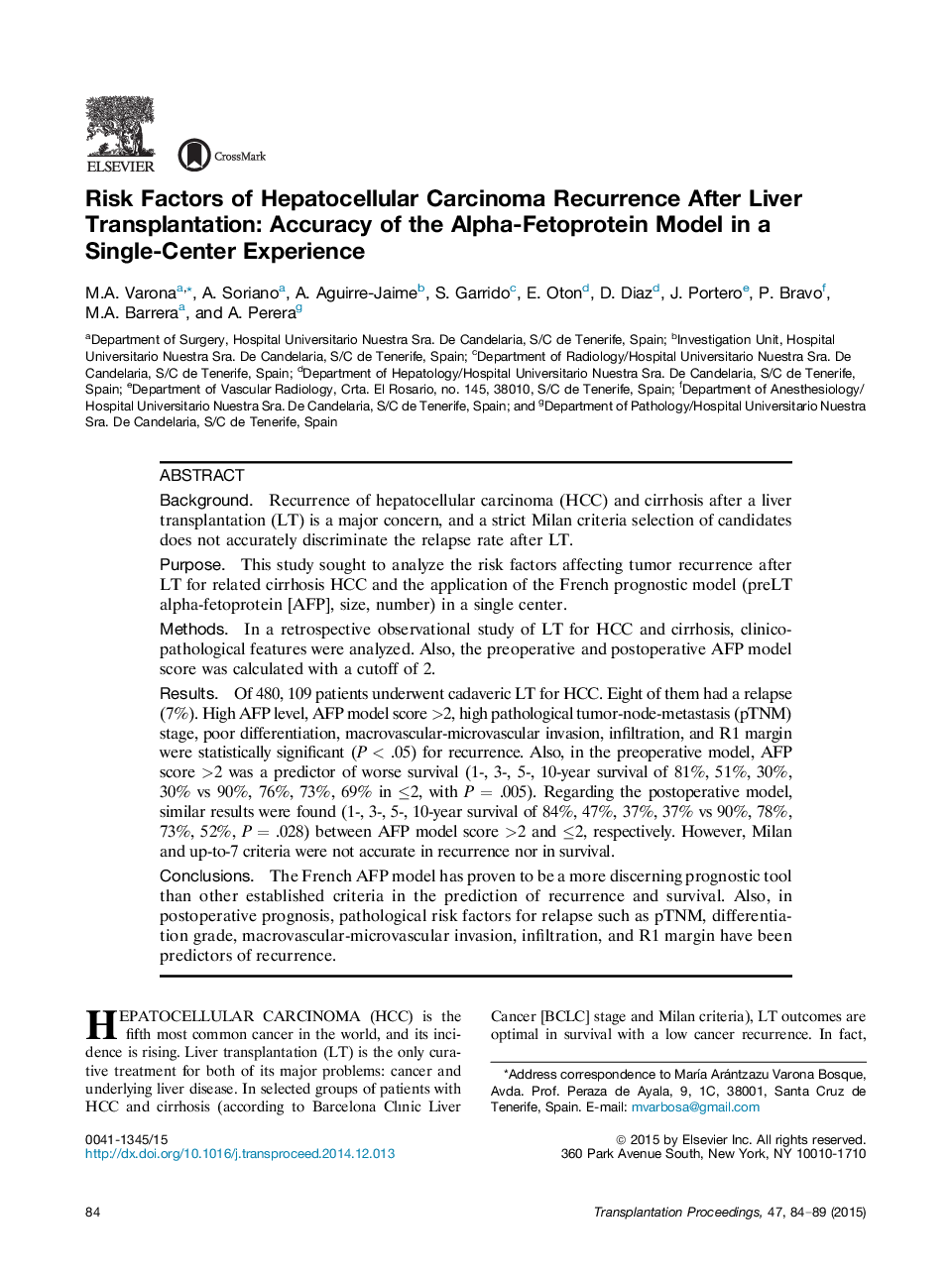| Article ID | Journal | Published Year | Pages | File Type |
|---|---|---|---|---|
| 4256369 | Transplantation Proceedings | 2015 | 6 Pages |
BackgroundRecurrence of hepatocellular carcinoma (HCC) and cirrhosis after a liver transplantation (LT) is a major concern, and a strict Milan criteria selection of candidates does not accurately discriminate the relapse rate after LT.PurposeThis study sought to analyze the risk factors affecting tumor recurrence after LT for related cirrhosis HCC and the application of the French prognostic model (preLT alpha-fetoprotein [AFP], size, number) in a single center.MethodsIn a retrospective observational study of LT for HCC and cirrhosis, clinicopathological features were analyzed. Also, the preoperative and postoperative AFP model score was calculated with a cutoff of 2.ResultsOf 480, 109 patients underwent cadaveric LT for HCC. Eight of them had a relapse (7%). High AFP level, AFP model score >2, high pathological tumor-node-metastasis (pTNM) stage, poor differentiation, macrovascular-microvascular invasion, infiltration, and R1 margin were statistically significant (P < .05) for recurrence. Also, in the preoperative model, AFP score >2 was a predictor of worse survival (1-, 3-, 5-, 10-year survival of 81%, 51%, 30%, 30% vs 90%, 76%, 73%, 69% in ≤2, with P = .005). Regarding the postoperative model, similar results were found (1-, 3-, 5-, 10-year survival of 84%, 47%, 37%, 37% vs 90%, 78%, 73%, 52%, P = .028) between AFP model score >2 and ≤2, respectively. However, Milan and up-to-7 criteria were not accurate in recurrence nor in survival.ConclusionsThe French AFP model has proven to be a more discerning prognostic tool than other established criteria in the prediction of recurrence and survival. Also, in postoperative prognosis, pathological risk factors for relapse such as pTNM, differentiation grade, macrovascular-microvascular invasion, infiltration, and R1 margin have been predictors of recurrence.
